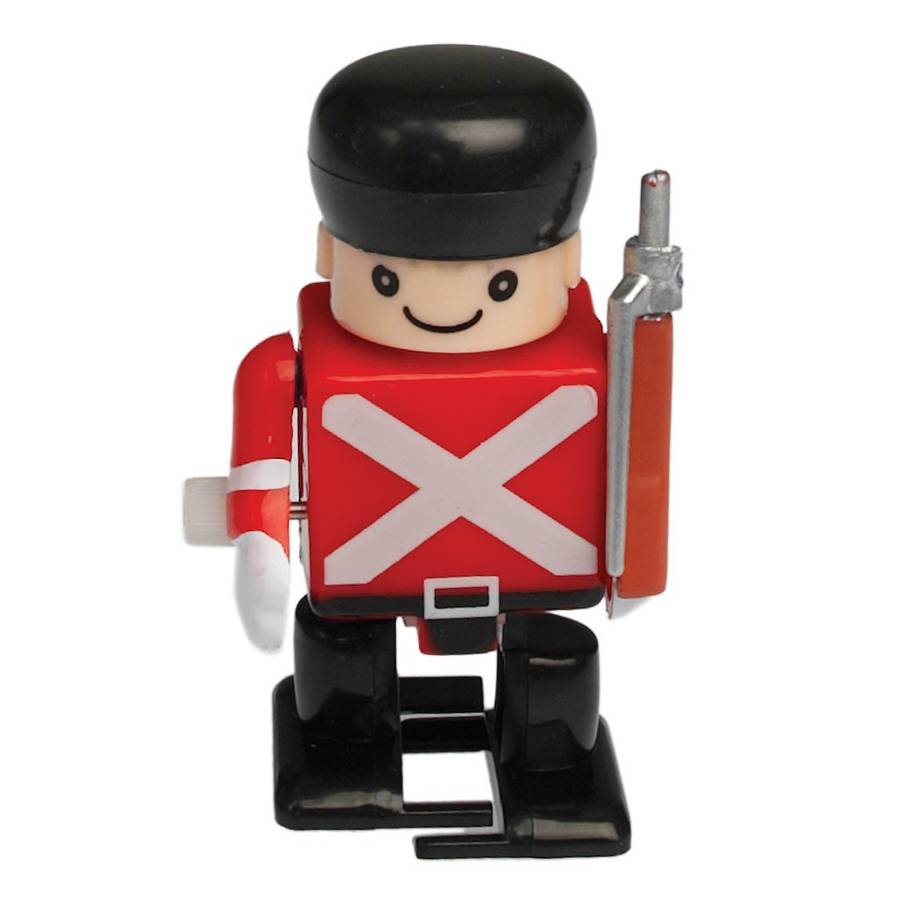The beloved wind-up toy, a time-honored plaything that has captivated generations, holds a special place in our hearts. These intricate contraptions, powered by the energy we impart, bring boundless joy with their whimsical movements. However, like all treasured possessions, wind-up toys can occasionally encounter hiccups that halt their playful antics.

Image: www.notonthehighstreet.com
If your cherished wind-up toy has fallen silent, fret not! With a little know-how and a touch of patience, you can restore its lively spirit. Embark on this step-by-step guide and witness your beloved companion regain its former glory.
Unveil the Inner Workings: A Comprehensive Guide
To mend a wind-up toy effectively, it’s essential to understand its inner workings. These toys typically comprise three main components:
- Mainspring: The driving force behind the toy’s motion, made from a coiled metal strip.
- Gear Train: A series of gears that transfer the mainspring’s energy to the toy’s mechanism.
- Mechanism: The specific apparatus that produces the toy’s movement, such as walking, hopping, or spinning.
Troubleshooting Common Ailments: Finding the Root Cause
When your wind-up toy malfunctions, the problem often lies within one of its three core components. Here’s how to identify the culprit:
- Mainspring Issues: If your toy fails to wind up or winds but doesn’t operate, the mainspring may be broken or loose.
- Gear Train Problems: Skipping, grinding, or excessive noise during operation indicates issues within the gear train.
- Mechanism Malfunctions: When the toy winds and moves erratically or not at all, the mechanism is likely at fault.
Restoring Functionality: A Step-by-Step Guide
Equipped with the knowledge of potential issues, let’s delve into the art of toy repair:

Image: www.pinterest.com
Addressing Mainspring Woes
- Remove the toy’s cover, being cautious not to lose any small parts.
- Inspect the mainspring for breaks or looseness. If broken, carefully remove it and replace with a new one of the same size.
- If loose, gently tighten the mainspring by winding it a few turns. Avoid overtightening to prevent damage.
Resolving Gear Train Glitches
- Disassemble the gear train components, taking care to note their original positions for reassembly.
- Clean any visible dirt or debris from the gears using a soft brush or cloth.
- Apply a small amount of lubricant, such as petroleum jelly or silicone grease, to the gear teeth for smooth operation.
Reviving the Mechanism
- Identify the specific mechanism responsible for the toy’s movement.
- Gently clean the mechanism’s components with a soft cloth or cotton swab.
- Check for any misaligned parts or obstructions and adjust them accordingly.
Expert Insights: Enhance Your Toy Repair Skills
“The secret to successful wind-up toy repair lies in meticulous observation and patience,” advises Emily Carter, an experienced toy restorer. “Don’t rush the process, as each step plays a crucial role in restoring your toy.”
Sarah Jones, a renowned toy collector, adds, “Before attempting repairs, consult online tutorials or seek guidance from fellow toy enthusiasts. Their experiences can prove invaluable in troubleshooting and resolving specific issues.”
How To Fix A Wind Up Toy
Conclusion: The Joy of Revival
With the knowledge and techniques outlined in this guide, you now possess the power to restore your beloved wind-up toy to its former glory. Relive the joy of watching its whimsical movements unfold as it prances, skips, or spins before your eyes.
May your toy-mending endeavors bring countless smiles to your face and rekindle the cherished memories associated with these timeless playthings. Go forth and breathe new life into your treasured companion, and let its playful antics continue to enchant you and generations to come.